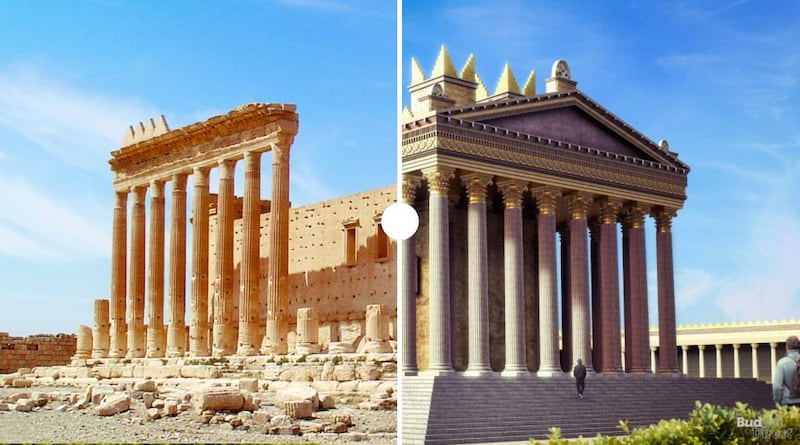Ever visited a historic landmark and wondered what it would have looked like in its heyday? Now, thanks to the wonders of modern technology, you can actually get a glimpse of what some ruined and endangered Unesco World Heritage Sites would be like if they had been perfectly preserved.
The project is part of a series of campaigns released by the Budget Direct Travel Insurance team, in a bid to breathe new life into cultural heritage sites that Unesco has categorised as "in danger".
The Budget Direct team started by researching the 53 sites on the list, then selected locations that were man-made and had some elements remaining.
They decided not to include natural sites, nor sites for which accurate historical and design information was unavailable. The team collaborated with architect Jelena Popovic throughout the research stage of this project.
Considering the fact that World Heritage Sites exist under constant threat of degradation and destruction, the project gives viewers a look at cultural landmarks as never seen before. And, since it’s all virtual, you can “visit” these sites without leaving your house.
Here’s a look at the landmarks they’ve chosen to recreate:
Hatra, Iraq
This ancient city is located in the Nineveh governorate in present-day Iraq.
Hatra was a large fortified city that flourished under the Parthian empire. The fortress is believed to have been built between the 2nd and 3rd century BC.
It features high, thick walls reinforced by towers, and inner and outer walls; numerous sculptures and statues have also been discovered in the city.
Its ruins were discovered in the 19th century, and it was added to Unesco’s endangered list in 2015.
Leptis Magna, Libya
Expanded and embellished by Roman emperor Septimius Severus, who was born there, Leptis Magna was considered one of the most beautiful cities of the Roman Empire.
One of the ancient city’s main attractions was its theatre, which was dug into a low hill, and incorporated additional stands, built with natural stone and concrete. The site also featured a harbour, public monuments, a marketplace and residential districts.
Its ruins are located within Libya, 130 kilometres east of Tripoli.
Palmyra, Syria
Located north-east of Damascus, Palmyra contains the ruins of a city that was once an important cultural centre of the ancient world. It features art and architecture that married Greco-Roman techniques with local elements, with structures including the Roman Theatre at Palmyra, Palmyra Castle and a senate building.
During the height of the Syrian civil war, parts of the ancient city were destroyed. Today, work is being done to preserve the city.
Portobelo-San Lorenzo Fortifications, Panama
Located along the Caribbean coastline of the Colon Province in Panama, these military constructions were built by the Spanish Empire in the 17th and 18th century to protect transatlantic trade.
It was inscribed by Unesco in 1980 as a World Heritage Site because of its military architecture.
Nan Madol, Federated States of Micronesia
Built in the 8th or 9th century, Nan Madol is an ancient “city on water”. It features a series of more than 100 islets – made using stone and coral platforms – linked by a network of canals.
These ruins represent the ceremonial centre of the Saudeleur dynasty, a vibrant period in Pacific Island culture. The site features stone palaces, tombs, homes and more spread over 81 hectares of Pohnpei's mangrove-covered shore.
It is included on the list of World Heritage in Danger due to threats, notably its exposure to the elements and the siltation of the waterways.







